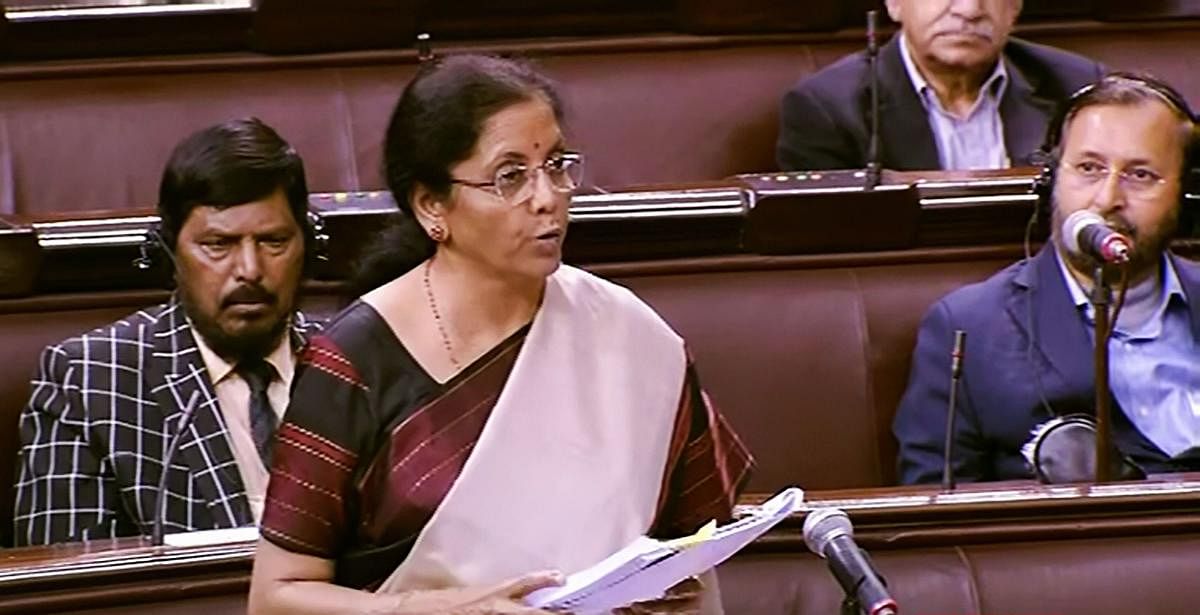Finance Minister Nirmala Sitharaman claimed in the Lok Sabha recently that the economy is getting back on track, pointing to seven indicators that provide hope. Elaborating on the steps taken to support the engines of growth— consumption, investment and exports— she listed the ‘green shoots’ that have started to emerge. On the crucial aspect of boosting consumption, the government listed the increase in minimum support price (MSP) of all mandated rabi and kharif crops for 2019-20. If this is all it takes to boost consumption demand, I wonder why rural demand slumped in the first instance.
After all, MSP is announced before every crop season, year after year, and a nominal hike in prices is always expected, given the rise in cost of production. Paddy price was raised by 3.7% for 2019-20, while the increase in wheat price was 6.1%. In any case, what perhaps is not being realised is that only 6% of India’s farmers get to market at the MSP announced. Prices for most other commodities in the open market had prevailed much lower for farmers. In other words, inefficient markets couldn’t provide the stimulus needed to prop up rural demand.
With the outlay for MNREGA shrinking by 13%, and a steep cut in food subsidies from a budget estimate of Rs 1.84 lakh crore to a revised estimate of Rs 1.08 lakh crore in 2019-20 (to go up marginally to Rs 1.15 lakh crore for 2020-21), clearly rural consumption did not receive any fillip.
In addition, for the five major schemes that address malnutrition, the allocation was reduced by 3.7%. The budget for mid-day meal scheme, National Health Mission and National Rural Drinking Water Mission too faced cuts. Add to this the allocations announced for agriculture and allied sectors, irrigation, rural development and panchayats, which just got incremental increases, there was in reality no fiscal stimulus for rural areas that could boost rural demand.
The question therefore is, what happened to the declining consumption demand, especially in the rural areas? If rural demand was not a significant factor in the slowdown, with growth slipping to 4.5% in the previous quarter, I see no reason why IMF should go to the extent of saying that a slump in rural demand in India pulled down growth, which in turn pulled down global growth. Since Budget 2020 did not address the crisis of demand, nor were any special measures announced later to put more money into the hands of the rural poor, what remains unanswered is, how come growth can rebound without any tangible efforts to revive rural spending?
If without reviving rural demand economic growth can surge to 6% in FY2021, as the chief economic adviser to the finance ministry has claimed, it will be interesting to know what constitutes consumption demand for them.
If consumption demand is only restricted to a spike in sales of durables like mobile phones, refrigerators, air-conditioners, washing machines and automobiles, etc., it shows perhaps rural demand is not even factored in growth calculations. Otherwise, there is no reason why the slump in rural demand remained outside the economic radar screen, to be seen only in 2019, whereas rural incomes had declined or remained stagnant for over two decades. It is only when economic growth fell to less than 6% and adequate explanation was not forthcoming for the downhill slide that mainline economists shifted focus to the hinterland for answers.
Since 70% of rural households are dependent on agriculture, the depressing levels of farm incomes over the past two decades should have reflected earlier in the growth estimates. As per an OECD-ICRIER study, farmers suffered a monumental loss of Rs 45 lakh crore in the 16-year period between 2000-01 and 2016-17. That is, every year, the farmers encountered a loss of approximately Rs 2.54 lakh crore. So much so that even Economic Survey 2016 had estimated that average farm incomes in 17 states of India, which is roughly half the country, stood at a paltry Rs 20,000 a year. In other words, farm families in half the country were surviving on less than Rs 1,700 a month. Such a severe farm distress should have pulled down growth, but it didn’t.
As if this is not enough, Niti Aayog estimates showed that during 2011-12 to 2015-16, the growth in real farm incomes was less than 0.5% every year. With demonetisation hitting the informal sector, the growth in real farm incomes in 2017 and 2018 was ‘near zero’. Going by the chronology of farm distress, and knowing that farmers barely had enough to manage their subsistent households, how could the acutely distressed rural farm incomes not pull down rural demand? That’s a question that mainline economists and policymakers have conveniently ignored.
As long as the growth continued to hover over 6%, going to even 8-9% for quite a few years, rural India remained below the economic radar. Once again, if growth picks up, rural demand will disappear from the economic discourse.
(The writer is an agricultural economist)
